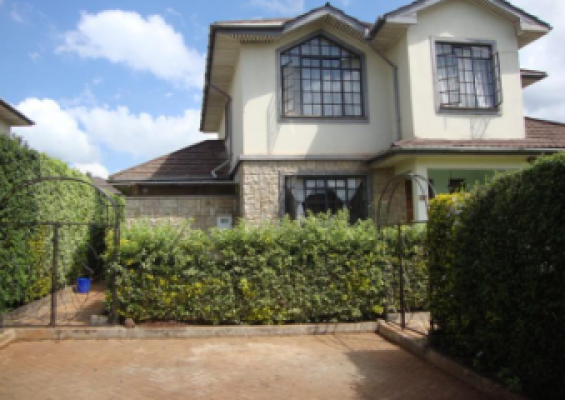For those of you with small living rooms, you might be tempted to just throw in a sofa, a coffee table and a TV and be done with it. But there is much you can do with your space in order to create a favourable milieu for gatherings with family and friends or just for unwinding after a stressful day. These tips and tricks will help you master that small living room arrangement for that all-important space in the home.
1. Establish a focal point
One of the very first things before you begin your living room arrangement is to find a focal point for the space. Focal points are the first things people see when they enter the room and will help in creating a visual balance for your space. For small living rooms, a focal point is particularly crucial as it helps to build the rest of your furniture around it. For many of us, the focal point will be our television but it could also be a feature wall, an oversized piece of art, a large mirror or a recessed ceiling. It should be something that stands out and is interesting to look at.
2. Consider the traffic flow
You might like to over-decorate your living room, but it’s important to consider the traffic flow of the space. This refers to how people can move in and out of your living room. Create a smooth traffic flow with a clear path so that people are not falling over furniture when passing through. To do so, think about the walk patterns in your home – usually it will be from the entrance to the living room, the kitchen to the living room, the living room to the dining room, and make sure furniture pieces are placed approximately 40 to 70 cm apart from each other.
3. For conversations or watching television?
Think about whether your living room is meant primarily for tête-à-têtes and entertaining or for watching television, as that will affect what furniture to buy and your layout. For the former, you might want to invest in a variety of seating such as armchairs, ottomans or beanbags other than a main sofa so that your guests can move them around and mingle. Have the seats face each other to facilitate conversations.
If you prefer a living room where you can chill and relax with the TV, orient your seats towards the television. Make sure the viewing angle from your sofa or armchair isn’t more than 30 degrees. And mount your television at an appropriate height – the centre of your screen should be at your eye level from where you sit.
4. One extra-large sofa rather than several armchairs
Sometimes, going for one large sofa can make your small living room seem bigger than placing several small ones in the room. Your space will look a lot less cluttered with just one piece of furniture in the room. But don’t immediately jump on that overstuffed couch you’ve been eyeing for a while – a sofa with clean lines and exposed legs would work better in a small space. If you need extra seats, go for pieces that can be stowed away or do double duty e.g. an ottoman that can serve as a side table or a daybed that can double as a guest bed.
5. Placing carpets and rugs
It might seem counter-intuitive, but large rugs would work better in a small living room. Small carpets and rugs are great to break up different zones in a big space but in a small room, they break up the floor visually, making your living room appear fragmented.
Choose a rug or carpet that is big enough for all your living room pieces to sit within. But if that is not possible, at least make sure the front legs of your sofa are able to rest nicely within the carpet or rug. Smaller pieces like armchairs and side tables should have all their legs sitting nicely inside.
6. Coffee tables or side tables?
It would seem coffee tables are a living room prerequisite, but if you have a small space, having one might take up unnecessary space. Consider going for a side table instead, which as their name suggests, goes at the side and usually at the end of your sofa.
When it comes to choosing coffee tables, keep in mind that they should be at a height that’s approximately half (or three quarters) the height of your sofa seat from the floor to make reaching out for things on the table easier. For side tables, they can be a bit taller – located around the height of your sofa arms or just an inch or two shorter. The depth of the side table also shouldn’t exceed the depth of your sofa.
Round tables are perfect for a living room with lots of straight lines as the curves will help to soften the overall look. But if you’re looking to position your side table at a corner, you might want to purchase a square one so that it will fit the corner better.
7. Different types of lights
Lights can either be decorative or functional, or both. In the living room, determine what tasks you would be doing in the space in order to decide what type of lighting to go for. If you’re looking to create a focal point (see point 1), go for a statement chandelier, ceiling pendant or an overhead arc lamp. But make sure the glow from your light doesn’t affect the glare from the TV or it will be distracting.
Accent lights, like table lamps, are mainly decorative and they can add a cosiness and warmth to any living space. If you tend to do light reading in the living room, you might want to go for a floor lamp or a reading lamp that can be placed on a side table.
Recessed lights, and cove lights are great lighting options for small spaces, particularly if you want to keep things looking clean and streamlined. The former is intended more for directional lighting while the latter helps to create a homey ambience. Take note that you will most likely have to do up a false ceiling for them, which means a slightly lower ceiling height for your living room.
8. Make use of vertical spaces
In almost every small room guide, you’re asked to make use of vertical spaces. After all, with a lack of floor space, the only way to move is up! For more storage, choose to build full-height shelves or cabinets – the height will make the living room appear taller. Empty walls can be dressed up into a gallery wall for more personality. Mounting a mirror can instantly transform the look of a room, while helping to bounce light around. There are plenty of options to work with, even in a living room without much square footage so always be on the lookout for that extra vertical space.





